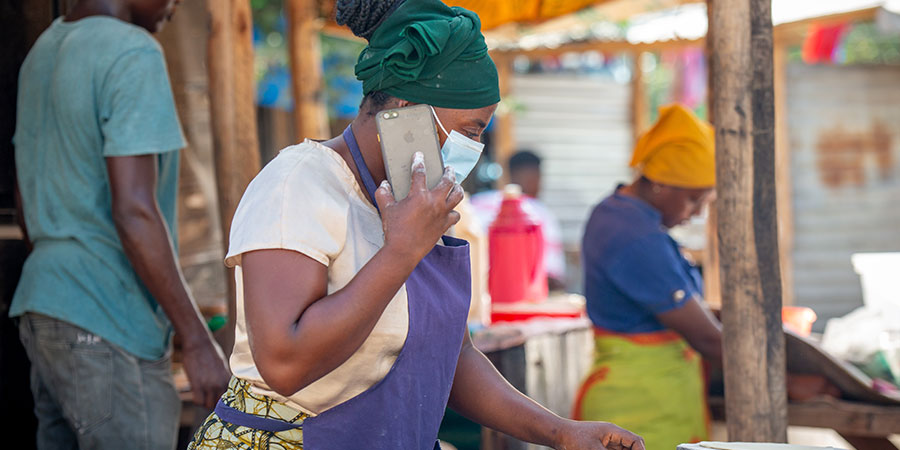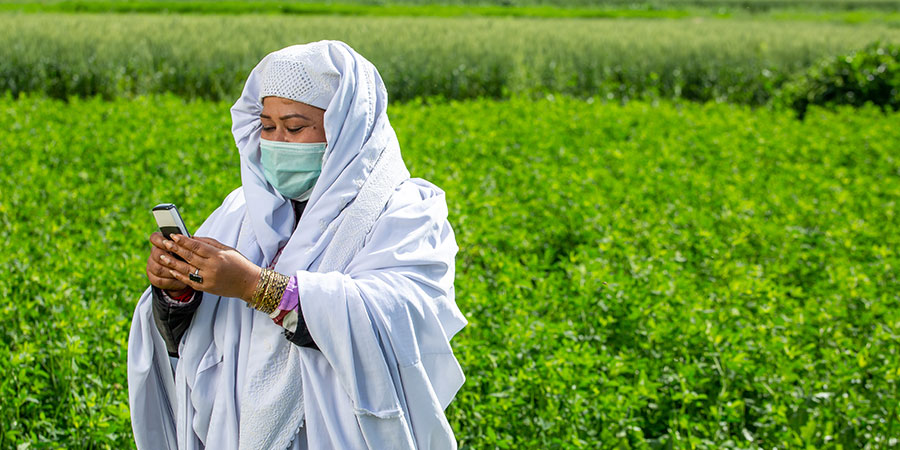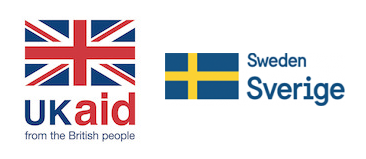Over the last two years, the COVID-19 pandemic has reinforced the importance of access to mobile and mobile internet. Women in particular have been disproportionately negatively impacted by the pandemic and mobile has provided them with a means to mitigate many of the negative impacts, by enabling ongoing access to information, health care, education and income generating opportunities. However, while mobile connectivity has been expanding quickly, it has not been expanding equally and women are being left behind in an increasingly connected world. The pandemic has really highlighted this stark digital divide which threatens to exacerbate the inequalities women already experience.
Understanding and addressing the mobile gender gap is more crucial than ever before. We are grateful to the UK Foreign, Commonwealth & Development Office (FCDO) and the Swedish International Development Cooperation Agency (SIDA) for their support in enabling us to continue to collect vital data on the mobile gender gap and barriers faced by women in low- and middle-income countries (LMICs). This data is fundamental for understanding and addressing the mobile gender gap.

We will be publishing our latest Mobile Gender Gap Report 2022 in June, but for International Women’s Day I am delighted to share a preview of some of our updated mobile gender gap numbers. Unfortunately, the story is not as positive as in previous years. The substantial gender gap in mobile internet use in LMICs had been improving, driven primarily by South Asia where it decreased significantly from 67% in 2017 to 36% in 2020. However, this progress has now stalled across LMICs and in some countries the mobile internet gender gap has even increased.
Women are now 16% less likely than men to use mobile internet across LMICs. By comparison, last year this gender gap was 15% and prior to that it had reduced every year from 25% in 2017. While more women continue to use the internet than ever before and it remains the primary way most people access the internet in LMICs, their rate of adoption has slowed over the last year. Furthermore, in some countries, men’s rates of mobile internet adoption has been higher than that of women’s, driving an increase in the mobile internet gender gap.
Owning a smartphone is also critical to being able to use the internet and we have seen that when a woman owns a smartphone she is almost as likely as a man to use mobile internet and use a similar range of services. Similar to the story we have seen in mobile internet use, the gender gap in smartphone ownership had been reducing year on year across LMICs – from 20% in 2017 to 16% in 2020 – but over the last year this has reversed. Women are currently 18% less likely than men to own a smartphone.
The underlying gender gap in mobile ownership as a whole remains largely unchanged with women estimated to be 7% less likely than men to own a mobile phone across LMICs, highlighting that those who still do not have a mobile phone are proving difficult to reach. This is a lost opportunity, since these people are not only predominantly women, but also disproportionately rural, less educated and lower income, with arguably the most to gain from being connected.
Last year we saw early signs in some countries that the pandemic may be disproportionately negatively impacting women’s handset ownership. This new data is alarming and suggests that progress in addressing the mobile internet gender gap is stalling, and in some cases reversing, at a time when access to mobile and the internet is most critical.
These gender gaps also exist in women’s access to and use of mobile money services, which are helping drive financial inclusion for women and can increase their economic independence and strengthen their role as financial decision-makers. It is important to also ensure that women can access and use mobile money on par with men.
The mobile gender gaps are driven by social, economic and cultural factors, which result in women experiencing barriers to mobile ownership and use. To close the mobile gender gap, we need to address these issues and focus on access, affordability, knowledge and skills, safety and security, and relevance of mobile services. These barriers are also experienced by men, however, women tend to experience some of them more acutely due to structural inequalities and underlying social norms, including disparities between men and women in terms of education and income.

In support of the “Break the Bias” theme of International Women’s Day this year we would like to call on all stakeholders to look at the biases that are driving the mobile gender gap and to take action to ensure women are not being excluded, both socially and economically.
This new data is a clear call to action and highlights that we can’t be complacent. Ms Bhatia, Assistant Secretary-General and Deputy Executive Director at UN Women, recently spoke at our session on digital inclusion at MWC Barcelona highlighting that “Mosquito-bite interventions will not work. Women and girls need universal access to the internet”. This will only be achieved through concerted action by stakeholders working together to address women’s needs and barriers to mobile access and use. Without renewed investment and focus, women are at risk of being further left behind.
The mobile gender gap is not going to close on its own but we know that with informed, targeted action it is possible to make a difference. This is highlighted by the GSMA Connected Women Commitment Initiative where mobile operators have made formal commitments to accelerate digital and financial inclusion for women across Africa, Asia and Latin America. Since 2016, 40 mobile operators have made formal commitments to reduce the gender gap in their mobile internet and mobile money customer base. So far, they have collectively reached over 55 million additional women with mobile internet and mobile money services.
Our upcoming Mobile Gender Gap Report 2022 will provide a much more detailed analysis of the gender gap in mobile ownership and mobile internet use across LMICs. We will also be sharing our latest data on the mobile money gender gap in March in the upcoming State of the Industry Report on Mobile Money 2022. These reports will provide insights on the key trends, barriers faced by women and opportunities for addressing them and will hopefully inspire further action to drive digital and financial inclusion for women. There has never been a more urgent time to address this issue and together we can make a difference.
When women thrive, society, businesses and economies thrive.
Our Mobile Gender Gap Report 2022 will be available here from June 2022.

The GSMA Innovation Fund and Connected Society programmes are supported by the UK Foreign, Commonwealth & Development Office (FCDO) and the Swedish International Development Cooperation Agency (SIDA).


